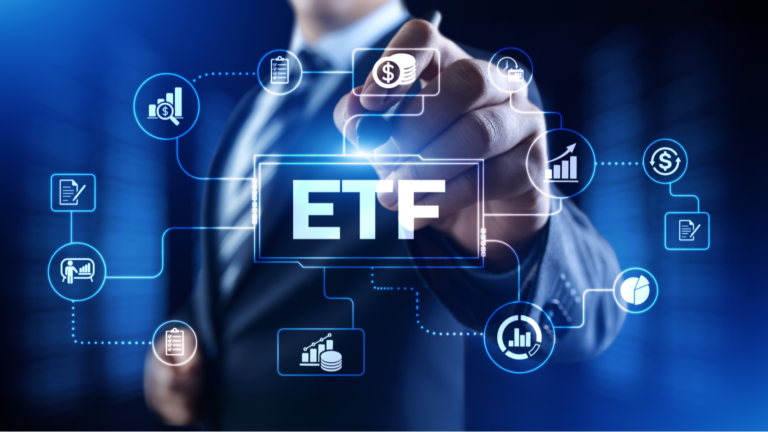I’m not a fan of cryptocurrencies. Despite supporting the blockchain, I’ve never gotten comfortable with digital currencies. As a result, it makes it difficult for me to find hot ETFs to buy that aren’t in some way related to digital assets, which have been hotter than a pistol in 2023.
For example, the top-performing ETF in 2023 through March 1 was the Valkyrie Bitcoin Miners ETF (NASDAQ:WGMI). It was up more than 69% at the time. Two months later, WGMI is up 129% for the year.
Those are some numbers. The problem is the ETF has less than $7 million in net assets. That’s hardly a beacon of security. I’m more interested in top-performing ETFs with hundreds of millions of dollars or more in assets.
A quick look at Finviz’s performance statistics for ETFs in 2023 shows that most of the big performers are ETFs like WGMI, leveraged funds, or in some way different from your plain vanilla S&P 500 index fund.
Reading between the lines, here are the three best ETFs to buy for the long haul.
| IYW | iShares U.S. Technology ETFiShares U.S. Technology ETF | $92.19 |
| ITB | iShares U.S. Home Construction ETF | $75.07 |
| FBCG | Fidelity Blue Chip Growth ETF | $25.37 |
iShares U.S. Technology ETF (IYW)

The iShares U.S. Technology ETF (NYSEARCA:IYW) is up 23.9% year to date. It tracks the performance of the Russell 1000 Technology RIC 22.5/45 Capped Index.
The capped part of the index means no stock can have a weighting of more than 22.5% and the aggregate of tech stocks with a weighting of 4.5% or greater can’t exceed 45%. This ensures the fund doesn’t get too deep on any particular tech stock.
IYW has a total of 139 holdings. The top three segments of the tech sector by weight are software and services (40.1%), tech hardware and equipment (22.6%), and semiconductors and semiconductor equipment (21.4%).
Its top three holdings by weight are Apple (NASDAQ:AAPL) at 19.7%, Microsoft (NASDAQ:MSFT) at 17.9% and Alphabet (NASDAQ:GOOGL) at 5.3%. So it’s a big bet on Apple and Microsoft, which is a smart one in this environment of uncertainty.
The ETF charges a reasonable fee of 0.39%, or $39 annually per $10,000 invested.
iShares U.S. Home Construction ETF (ITB)

Home construction stocks got hammered in 2022, so it’s only appropriate that the iShares U.S. Home Construction ETF (BATS:ITB) is up 23.9% YTD.
As its name suggests, ITB invests in a collection of U.S. stocks involved in the home construction sector. A passively managed index fund, it tracks the performance of the Dow Jones U.S. Select Home Construction Index. ITB got its start in April 2006 and is the largest of the U.S.-listed homebuilder ETFs, with $1.8 billion in net assets.
Fairly concentrated with 48 holdings, the top 10 account for nearly 65% of the fund’s net assets. The three largest are D.R. Horton (NYSE:DHI), Lennar (NYSE:LEN), and NVR (NYSE:NVR). They have a combined weight of nearly 37% of the portfolio.
I’ve liked Lennar for some time. In March 2014, I recommended its stock, and I’ve been doing so from time to time ever since. Up 213% since then, it’s had a wild ride.
Owning a basket of stocks via an ETF helps eliminate some of the company-specific risks and volatility, but not all. There’s no question that it’s a rough-and-tumble industry.
That said, the U.S. has a massive housing shortage. The holdings in ITB are going to be partly responsible for solving this problem. Long term, it’s a win, especially if you buy whenever it falls below $50.
Fidelity Blue-Chip Growth Fund (FBCG)

Fidelity Blue-Chip Growth Fund (BATS:FBCG) has a nice ring, combining blue-chip companies with above-average growth. It’s up 21.3% YTD, nearly three times the S&P 500’s return.
According to the ETF’s fact sheet, the fund invests in mid-cap and large-cap companies that are “well-known, well-established and well-capitalized” and have above-average potential for growth.
Launched in June 2020, the actively managed ETF has approximately 158 holdings. I say “approximately” because it doesn’t reveal its holdings in real-time to ensure that investors aren’t able to copy its investment strategy.
Fidelity launched this nontransparent fund with two others — Fidelity Blue Chip Value ETF (BATS:FBCV) and Fidelity New Millennium ETF (BATS:FMIL) — to leverage its strength in active management.
“Our active equity ETFs harness the power of Fidelity’s 74-year legacy of active management delivered with the tax efficiency, trading flexibility and potential cost efficiency benefits ETF vehicles offer,” stated Greg Friedman, Fidelity’s head of ETF management and strategy.
FBCG has a large weighting in information technology at 41.8%. That’s almost three times the consumer discretionary sector weighting, the second-highest in the fund. The top 20 holdings account for nearly 69% of its $494.2 million in net assets.
Charging 0.59%, you’re getting active management at a reasonable price.
On the date of publication, Will Ashworth did not have (either directly or indirectly) any positions in the securities mentioned in this article. The opinions expressed in this article are those of the writer, subject to the InvestorPlace.com Publishing Guidelines.
